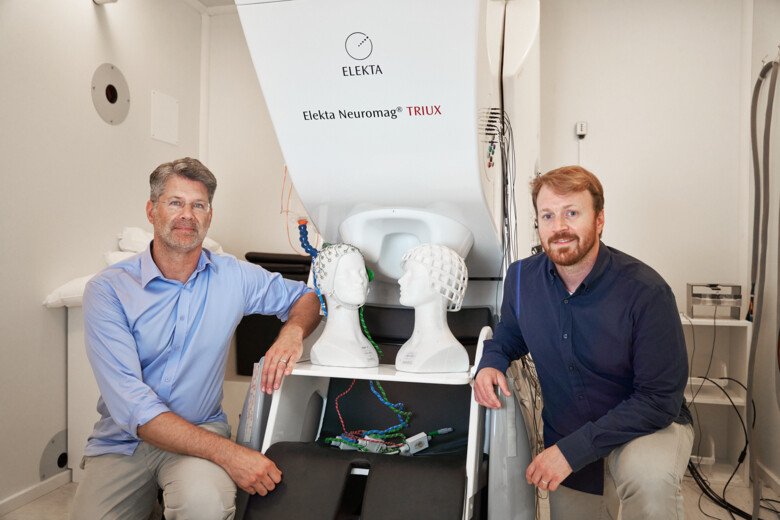New grant from the Swedish Research Council makes KI's brain-imaging lab NatMEG world-class

The national MEG lab at Karolinska Institutet is already the only lab in Sweden with equipment to measure neuronal brain activity in real time across the entire brain. Now, a new sensor-system upgrade to its technical equipment will make the lab an international leader in the field.
The method of magnetoencephalography (MEG) is used, among other things, to examine epilepsy patients.
"The clinical benefit is mainly in the evaluation of epilepsy, especially as part of the planning for surgical interventions to mitigate more severe cases of the disease,” says Daniel Lundqvist, brain researcher at KI’s Department of Clinical Neuroscience.
SEK eight million from the Swedish Research Council
With a strategic grant of more than SEK 8 million, the lab can now invest in the next generation of MEG sensors, ‘On-scalp MEG’, which allows the sensors to be placed directly on the head and thus closer to the brain. This provides a much higher level of detail than today's MEG systems.
"We now have a much better capacity to identify the source of an epileptic seizure, which can help patients enormously. The new sensors enable a very promising development, both of the clinical utility of the method and as a brain research tool," says Daniel Lundqvist.
With strategic support from KI, the method will be made available to users across the country.
Brain-imaging MEG is also used to better understand neurological and neuro-degenerative diseases, such as Alzheimer's and Parkinson's disease, as well as in cognitive neuroscience research.
Adaptable for children
On-scalp MEG provides a higher level of detail and allows for new measurements, not least to increase our knowledge of brain activity in children and adolescents. Thanks to the fact that the measuring device can be adapted to the size and shape of the head, it is easier to use on children.
"We already take many measurements on children, and this will provide significantly better and more detailed measurements. Today, no other lab in the world has a system where so many on-scalp MEG sensors can be placed directly on the head. We are one of the few organisations able to tackle such a complex system thanks to our collective knowledge and experience," says Christoph Pfeiffer, Head of Unit at NatMEG.
Currently, about 1-2 epilepsy examinations per month are carried out here, and the lab is open to all research groups in Sweden that need advanced electrophysiological methods to study brain function. The laboratory also provides important support for the development of new generations of MEG sensors, including in collaboration with Chalmers University of Technology.
MEG labs around the world
On-scalp MEG is currently available in only a few dozen laboratories worldwide and usually with between 10-50 sensors. NatMEG at KI reaches the international top-class with the new system of 128 sensors.
On-scalp MEG uses optically pumped magnetometer sensors that capture in real time subtle changes in the magnetic field generated by the post-synaptic activity of brain neurons. To extract more of the information captured, the researchers have developed their own AI-supported analysis tool.
